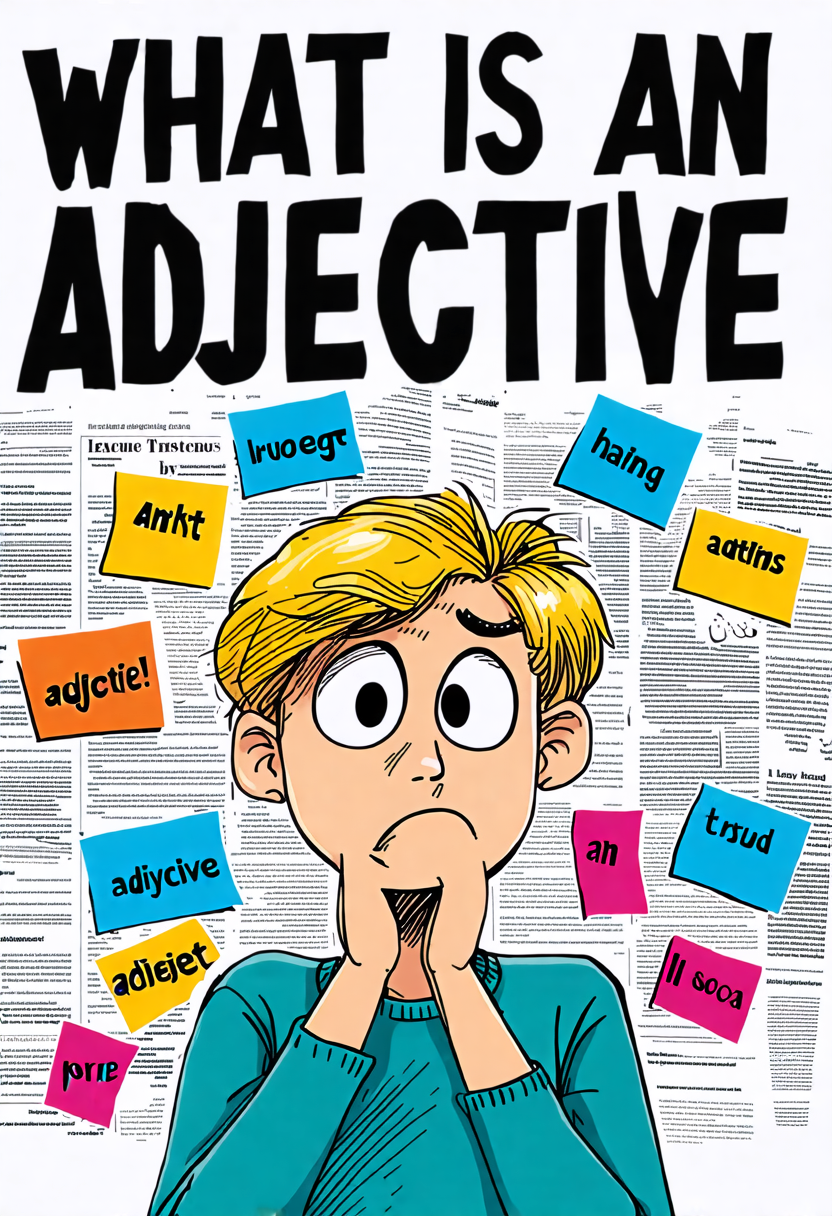What Is an Adjective?
An adjective is a word that describes or modifies a noun, giving details such as size, color, shape, or quantity. For example, in ‘red apple’ and ‘large house,’ ‘red’ and ‘large’ are adjectives. Adjectives can appear before nouns or after linking verbs; for instance, ‘The car is fast’ uses ‘fast’ to describe the car.
They enrich sentences by providing specific information, enhancing clarity. When multiple adjectives are used, they follow a specific order: quantity, quality, size, and color.
Definition of Adjectives
An adjective is a word that describes or modifies a noun. It provides more information about the noun, such as its size, color, shape, or quantity.
For example, in the phrase ‘red apple,’ the word ‘red’ is an adjective describing the noun ‘apple.’ Adjectives help to create a clearer and more specific image in the reader’s mind. They can also indicate the quality or state of a noun, such as ‘happy child’ or ‘broken vase.’
Adjectives typically come before the nouns they modify. However, they can also appear after certain verbs, known as linking verbs, to describe the subject of a sentence. This makes adjectives a versatile and essential part of speech in the English language.
How Adjectives Modify Nouns
Adjectives modify nouns by providing additional details about their characteristics, such as size, color, shape, and quantity. For example, in the phrase ‘blue sky,’ the adjective ‘blue’ describes the color of the sky.
Adjectives typically precede the nouns they modify, enhancing the description. They answer questions like ‘What kind?’ and ‘How many?’ Examples include ‘three apples’ (quantity) and ‘large house’ (size).
When multiple adjectives describe a noun, they are separated by commas or conjunctions, such as ‘a tall, elegant building.’ Coordinate adjectives modify the same noun equally, forming a single descriptive unit, like ‘dedicated, tireless efforts.’
Adjectives and Linking Verbs
While adjectives typically precede the nouns they modify, they can also appear after linking verbs to describe the subject of a sentence. Linking verbs connect the subject to a predicate adjective, which provides more information about the subject.

Common linking verbs include:
- To be: This is the most common linking verb. Examples: ‘She is happy,’ and ‘They are excited.’
- To feel: Used to express emotions or physical states. Examples: ‘I feel tired,’ and ‘He feels confident.’
- To seem: Often describes an impression or appearance. Examples: ‘The task seems difficult,’ and ‘She seems pleased.’
- To taste: Describes flavors or sensations. Examples: ‘The soup tastes delicious,’ and ‘The fruit tastes sour.’
Describing Qualities and Quantities
Nouns can be described by their qualities, such as color or size, and by their quantities, such as amount or number. Qualitative adjectives provide details about the characteristics of a noun. For example, ‘blue car’ and ‘tall building’ describe the color and height, respectively.
Quantitative adjectives, on the other hand, specify the amount or number of a noun. Examples include ‘three apples’ and ‘several books,’ indicating the number of apples and books. These adjectives help to give more information about the nouns they modify, making the descriptions more vivid and precise.
Using Multiple Adjectives
When using multiple adjectives, it is important to adhere to specific rules to guarantee clarity and readability. Adjectives should be ordered in a specific sequence to guarantee clarity and readability.
The typical order is as follows:
- Quantity: Describes how many. For example, ‘three’ in ‘three apples.’
- Quality: Describes the general characteristic. For example, ‘beautiful’ in ‘beautiful painting.’
- Size: Indicates the size. For example, ‘large’ in ‘large house.’
- Color: Specifies the color. For example, ‘red’ in ‘red car.’
This order ensures that sentences are clear and easy to understand.
Degrees of Comparison
In addition to understanding the sequence of multiple adjectives, it is also important to comprehend the degrees of comparison. Adjectives can express different levels of quality or quantity through three degrees: positive, comparative, and superlative. The positive degree describes a single noun. The comparative degree compares two nouns, often using ‘-er’ or ‘more’. The superlative degree compares three or more nouns, typically using ‘-est’ or ‘most’.
Below is a table illustrating these degrees:
| Degree | Example |
|---|---|
| Positive | tall |
| Comparative | taller |
| Superlative | tallest |
| Comparative (using ‘more’) | more beautiful |
| Superlative (using ‘most’) | most beautiful |
Coordinate Adjectives
Coordinate adjectives are multiple adjectives that equally modify the same noun. They provide more detail and help paint a clearer picture of the noun they describe.
Here are some key points about coordinate adjectives:
- Equal Importance: Each adjective independently and equally modifies the noun, such as in ‘bright, sunny day.’
- Comma Usage: When using coordinate adjectives, separate them with a comma or the word ‘and.’ For example, ‘a long, boring meeting.’
- Order Flexibility: You can change the order of coordinate adjectives without changing the meaning. For instance, ‘a friendly, helpful neighbor’ can also be ‘a helpful, friendly neighbor.’
- Test Method: Insert ‘and’ between the adjectives to check if they are coordinate. If it sounds natural, they are coordinate adjectives.
Adjectives Vs. Adverbs
Adjectives and adverbs serve different functions in a sentence, modifying nouns and verbs respectively. Adjectives describe or provide more information about a noun, such as in ‘a red car’ or ‘a tall building.’
Adverbs, on the other hand, modify verbs, adjectives, or other adverbs, indicating how, when, where, or to what extent an action occurs. An example is ‘she runs quickly,’ where ‘quickly’ modifies the verb ‘runs.’
It is important to distinguish between the two. For instance, ‘I feel bad’ uses an adjective, while ‘I feel badly’ uses an adverb and changes the meaning. Understanding their roles promotes clarity in communication and avoids common mistakes in writing.
Predicate Adjectives
Predicate adjectives follow a linking verb and describe the subject of the sentence. They work with verbs like ‘to be,’ ‘to feel,’ ‘to seem,’ and ‘to taste’ to give more information about the subject.
For example, in the sentence ‘The cake tastes delicious,’ ‘delicious’ is a predicate adjective describing ‘cake.’
Here are key points to remember about predicate adjectives:
- Position: They always follow a linking verb.
- Function: They describe or modify the subject.
- Linking Verbs: Common linking verbs include ‘is,’ ‘seems,’ ‘feels,’ and ‘becomes.’
- Examples: In ‘She seems happy,’ ‘happy’ is the predicate adjective describing ‘She.’
Nouns as Adjectives
When a noun is used to modify another noun, it acts as an adjective to provide additional detail. This type of noun is often referred to as an attributive noun. It helps specify the type or purpose of the main noun.
For example, in the phrase ‘chicken soup,’ the noun ‘chicken’ modifies the noun ‘soup,’ indicating the type of soup. Similarly, in ‘office chair,’ ‘office’ describes the kind of chair. These nouns-as-adjectives usually come directly before the main noun they modify.
- Adjectives With Sense Words
- Compound Adjectives
- Adjectives and Verbs
- How to Use Adjective Clauses?
- What Is an Adjective Phrase?
- Comparative Adjectives
- Superlative Adjectives
- What Do Adjectives Modify?







